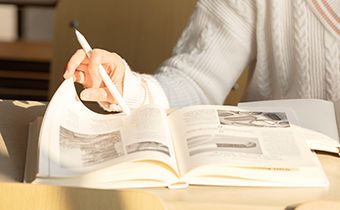小学语文微课教案
发表时间:2020-12-097Bunit5Grammar导学案。
教案课件是每个老师工作中上课需要准备的东西,是认真规划好自己教案课件的时候了。只有规划好教案课件工作计划,才能更好地安排接下来的工作!究竟有没有好的适合教案课件的范文?为此,小编从网络上为大家精心整理了《7Bunit5Grammar导学案》,欢迎阅读,希望您能阅读并收藏。
7BUnit5Abilities(4)
Grammar
1技能目标:掌握can和could表示“能”“会”的用法及区别。
学会运用感叹句来表达自己的思想感情。
2.知识目标:①重点单词:can,could,row,ski,snow,forget,racket
②重点词组:rowaboat,inthepast,goskiing
③重点句型:Whatabeautifulflower!=Howbeautifulthefloweris!
一、首字母填空。
1.HespeaksEnglishwellandhehasthea________totalktotheAmericanteacherinEnglish.
2.Hewasb______becausehejumpedintothecoldwaterandsavedagirllastweek.
3.Beq______.Wewillbelateforclass.
4.Hisgrandpalivesinavillagea_________.
5.Hefelloffhisbikeandh_________hisleftleg.
6.Somefactoriesarep__________dirtywaterintotherivernearby.
7.Heb__________hisarmsbecauseheputoutfirewithablanketlastnight.
8.It’snots_______fora5-year-oldchildtogoacrossthestreetwithoutanyhelp.
二、单选题。
1.()Luludoesherhomework___.Shesaysshewon’tdoitlikethisanymore.
A.carefulB.carelessC.carefullyD.carelessly
2.()--MayIgooutandplaywithmyfriend?
--No,you____.Youmustfinishyourhomeworkfirst.
AcanBmightnotCmaynotDcan’t
3.()Shedidn’tfeelwell,butshekept____theretohelpothers.
A.tocomeB.comingC.cameD.comes
4.()Ihope_____nextterm.
A.hertocomehereagainB.shecomeshereagain
C.shecancomehereagainD.shecomehereagain
5.()Listen!IhearTom______inthenextroom.
A.singB.singsC.sangD.singing
6.()Don’tleavethelights_______whenyouare________.
A.in,outB.out,inC.on,outD.out,on
完成书上P82A1,P83A2,P84所有填空.【wWW.36gH.COm 合同范本网】
1.情态动词can/could表示能力,could是can的过去式.
例如他五岁时就会游泳。He_____swim_____the______offive.
我10岁前不会说英语,但现在我会了。
I_____speakEnglish_____Iwasten.ButnowI______.
2.Can/could表示可能,could表示的可能性小于can,多用于疑问句和否定句.
假如我们不小心火的话,可能是非常危险的。
Fire_______________dangerousifwearenot________.
他会是李明的父亲吗?_______he_______LiMing’sfather?
他此刻不可能在家。He___________athomerightnow.
那个时候任何事情都可能发生在她的身上。
Anything________happen_________heratthatmoment.
3.感叹句的两种基本句型:
A)What+不定冠词(a/an)+形容词+名词(单数)!
亲爱的同学你能否告诉老师什么情况下没有不定冠词
1.当名词是_____________2.当名词是_____________
B)How+形容词+主语+谓语!
试完成下列句子
多勇敢的孩子啊!_____abravechild!=_____bravethechildis!
多么令人激动的消息啊!
What_____________________________________!
这些毯子真好看!
What______________________!
练一练:用what,whata,whatan,how填空。
1.___________beautifultheWestLakeis!
2.___________wonderfulthebasketballmatchis!
3.___________interestingclassitis!
4.___________lovelythatlittlegirlis!
5.___________nicesoupitis!
6.___________timeflies!
7.___________niceflowers!
8.___________badweather!
1.Revision
2.Presentation
flyakite,rideabike,goskiing,rowaboat
T:Icanrideabike.Whataboutyou?Canyourideabike?
S:Yes,Ican./No,Ican’t.
T:Icanrowaboat,butIcouldn’trowitfiveyearsago.Whataboutyou?
S:Icanrowaboatnow.Icouldn’trowitinthepast.Ican’trowaboat.
3.Workinpairs
S1:Canyouflyakite?
S2:Yes,Ican./No,Ican’t.
S1:Couldyougoskiinginthepast?
S2:Yes,Icould./No,Icouldn’t.
4.Isitpossible?
T:Iknowmostboysloveplayingbasketball,butI’mafraidyoucannotplayiteveryday.Why?
S1:Becauseitisarainyday.
S2:Becauseitisahotday.
S3:Becausewehavetoomuchhomeworktodo.
5.Presentation
Whatatallboy!Howtalltheboyis!
Whatcleandesks!Howcleanthedesksare!
6.Lookatsomepicturesandmakesentencesbyusing“what”and“how”
7.Finishtheexercisesinthebook.
8.Homework.
一、单选题。
1.()______musicitis!
A.WhataniceB.WhatniceC.WhatanniceD.Hownice
2.()_______youpleasetellmethewaytothehospital?
A.CanB.CouldC.MayD.Shall
3.()Myfather______beinhisoffice.HeisvisitingBeijingwithhisfriends.
A.canB.mayC.can’tD.mayn’t
4.()You___worryaboutyourson.Hewillgetwellsoon.
A.needn’tB.can’tC.mustn’tD.maynot
9.()Hesaidhe____skiwhenhewassix.
A.mightB.couldC.canD.would
10.()You____goandaskSimon.He____knowtheway.
A.must,canB.must,mayC.need,canD.can,may
7.()---MayIcomein?---______.
A.Yes,pleaseB.No,youcouldn’t
C.Yes,youmustD.No,youneedn’t
8.()Thelightinhisroomisonnow.He_____athome.
A.canbeB.can’tbeC.mustbeD.mustn’tbe
二、用所给词的适当形式填空。
1.It’simportant______________(be)carefulwithyourhomework.
2.Let’shelphimatonce.Heisin__________(dangerous)
3.Iwashmyfaceafter________(get)upeveryday.
4.---_______(can)Danielswimwhenhewas5yearsold?
---No,he_______.Butnowhe_______.
5.Ioftenhearthegirl________(sing)songsinthenextroom.
6.Youshouldkeep_________inthediningroomandtalk____________.(quiet)
7.Don’tforget_________(turn)offthelightsbeforeyouleave.
8.Itisusually_______(snow)inCanada.Youcango________(ski)there.
三、完型填空。
SomepeopleworkonSundaybutmostpeopledon’t.Manypeoplegetuplate,but_____1_____don’t.Nearly_____2______readstheSundaypaper.
Oftenthepaperisoutsidethedoorbeforethefamily____3_____up.TheSundaypaperisusuallyvery___4___.Manymenliketoreadtheworldnewsandsports.Mostmendon’treadthe____5__pages,butthemotherofthefamilyusually___6____.Thesepageshavenews_____7_____parties,food,healthandclothes.
MostSundaypapers____8____pictures.Childrenliketoread____9__.Oldpeoplecanfindtheoldthings.Thereis___10____foreveryoneintheSundaypaper.
()1.AotherB.othersC.anotherD.theothers
()2.AsomeoneB.everyoneC.nooneD.anyone
()3.AisgettingB.willgetC.getD.gets
()4.AmanyB.thickC.moreD.thin
()5.Awomen’sB.woman’sC.womanD.women
()6.AdoesB.didC.doD.todo
()7.AaboutB.atC.onD.in
()8.AhaveB.hasC.thereareD.thereis
()9.AtheyB.themC.itD.its
()10.AnothingB.everythingC.somethingD.anything
__________
相关推荐
7BUnit5Grammar(2)教案
一般给学生们上课之前,老师就早早地准备好了教案课件,大家都在十分严谨的想教案课件。写好教案课件工作计划,接下来的工作才会更顺利!有没有出色的范文是关于教案课件的?小编为此仔细地整理了以下内容《7BUnit5Grammar(2)教案》,仅供参考,欢迎大家阅读。
课题
7BUnit5Grammar(2)
课型
新授课
教学目标
1、进一步学习巩固如何使用can与could表达现在与过去的能力及可能性2、学习用what和how构成感叹句
重难点分析
尽可能熟练用can与could表达现在与过去的能力及可能性;运用what和how构成感叹句学情分析
学生已经基本掌握can与could的使用,但熟练性灵活性不够;对what和how构成感叹句已有初步认识,但对其具体结构还要进一步学习
教学方法
情景教学法,归纳法教具准备
课件教学步骤
教师活动
学生活动
个性化补充
STEP1RevisionT:Wehavelearnedtwowaysaboutusing“can”and“could”,canyoutellmesomethingaboutthem?Youcandiscussingroupsoffour.
Helpthemreviewtheruletogether.
STEP2Reviewingandtesting
A.Fillintheblanks:
1.____youspeakJapanese?No,I____________.
2._____youplaythepianowhenyouwereeight?Yes,I_______.
3._____youcook?YesI_____.
4.______youusecomputerlastyear?
Yes,I_______.
5._____youplaybasketball?No,I______________becauseI______________runfast.
6.___yourideahorse?
IwantbutI__________________.
Can表示我们能做某事;could表示____能做某事。
B.DesignasceneaboutReading“Abraveyoungman”,askthemthefollowingquestionsaboutthetext.Payattentiontothesecondwayofusing“can”and“could”.
1.Whycouldn’tMrsSungetoutofthekitchen?
2.WhatcouldhappenifZhangHuadidn’thelpher?
Can与could还可表示,could表示的可能性比can。当我们谈论过去的可能性时,只能用。但我们不能用can或could谈论。
Showthemmorepictures,havethemmakesentenceswith“can”and“could”correctly.
C.Exercises:
用“can”“could”的正确形式填空
1.I________gotoschoolonfoot,because
myhomeisnotfarawayfromschool.
2.Withoutair,we________live.
3.Itwillbehottomorrowsowe_______wear
shortsleeves.(袖子)
4.Iforgotmykey.I________openthedoor.
5.Hewasathomealone.He________bein
hospital.
STEP3Showthempictures,helpthemexpresswith“what”and“how”.Fillintheblanks.eg.
Whatabigfire!
Howdangerous!
Whatabravegirlsheis!
Howbravethegirlis!
Whatabeautifulflower!
Whatbeautifulflowers!
Whatbeautifulsnow!STEP4Discussionandconclusion
T:What’sthemainideaabouttheexpressionswith“what”and“how”.
感叹句表示说话的惊讶,喜悦,气愤等情绪.
很多感叹句是用what和how引起的.
What用来修饰一个名词.
how用来修饰一个形容词,副词和动词.
T:Pleasediscussingroupsoffour:
What’sthestructureofexpressionswith“what”?
1.What+a(an)+形容词+单数名词+主语+谓语
Whatafineday(itis)!
2.What+形容词+不可数名词+主语+谓语
Whatgoodnews(itis)!
3.What+形容词+可数名词复数+主语+谓语
Whatbeautifulflowers(theyare)!
What’sthestructureofexpressionswith“how”?
How+形容词/副词+主语+谓语
Howclevertheboyis!
Howfastheisrunning!STEP5Exercises
T:PleasefillintheblanksinPartCandworkouttherulebelow.
STEP6FinishingPartA1
GetthestudentstocompletePartA1,Page99.Checktheanswersinpairsandinclass.Askthestudentssomequestiontoofferthemmorechancesforpractice.
STEP7Moreinformation
What引起的感叹句都可以转换为how引起的感叹句
1.Whatgoodnewsitis!
---
2.Whatbeautifulflowerstheyare!
---
How引起的感叹句修饰形容词时可以转what引起的感叹句.
Howclevertheboyis!
---
STEP8Doingsomeconsolidateexercises
一、用How,What,Whata,Whatan填空
1.________nicepencil!
2._________beautiful!
3._________interstingbook!
4.__________bighouse!
5._________deliciousfood!
二、将下列句子改为感叹句.
1.MrsSunisveryold!
2.Thefirewasveryhot.
3.ZhangHuawasverybrave.
4.ZhangHuawasabraveyoungman.
5.Itishardwork.
6.Theyarepolitestudents.Write“can”and“could”ontheblackboard.Showthemexercises,havethestudentsfillintheblanks,reviewtherule.’Showthemquestionshavethemanswerthequestions,reviewtherule.Givethemasmalltestabout“can”and“could”.HavethemfillintheblankswiththepicturesHavethemthinkabouthemainideaabouttheexpressionswith“what”and“how”.Havethemdiscuss
thestructureofexpressionswith“what”and“how”.Givethemmoreexamplestohelpthemunderstandit.GivethemconsolidateexercisesCheckanswers.Discussingroupsoffouraboutthewaysofusing“can”and“could”.Fillintheblanks,trytoreviewtherules.AnswerthequestionsFillintheblankswiththepictures
payattentionto“How”and“what”.thinkabouthemainideaabouttheexpressionswith“what”and“how”.Discuss
thestructureofexpressionswith“what”and“how”.
Dosometranslation.FillintheblanksinPartCandworkouttherulebelow.Learnanddotheexercises.Finishofftheexercises.Checkanswerswiththeteacher’shelp.
作业设计
1.背诵本课的单词与词组
2.完成《同步导学》上本课时的作业
3.预习Integratedskills,完成预习作业
板书设计
表能力:
Can--Canyourun?--Yes,Ican./No,Ican’t.
Could--Couldyourunlastyear?--yes,Icould./No,Icouldn’t.
表可能:
Firecanbedangerousifwearenotcareful.
Anythingcouldhappentoheratthatmoment.
感叹句:
结构:1.What+a(an)+形容词+单数名词+主语+谓语
Whatafineday(itis)!
2.What+形容词+不可数名词+主语+谓语
Whatgoodnews(itis)!
3.What+形容词+可数名词复数+主语+谓语
Whatbeautifulflowers(theyare)
4.How+形容词/副词+主语+谓语
Howclevertheboyis!
Howfastheisrunning!
7Bunit5教案Vocabulary,Grammar,
Vocabulary
Teachingaimsanddemands:
Newwords:grateful,quick,slow,rude,recommend,award,super,sportswoman
Teachingmethods:task-basedapproach
Teachingtask:1todevelopanunderstandingoftheuseofadjectivesindifferentcontext
2tousesuitableadjectivestodescribepeople’sbehaviorandcharacter
Teachingaids:taperecorder
Teachingprocedures:
1Makesurethatstudentsunderstandtheconceptofopposites,Givesomesimilarexamples.eg.hot/cold,fast/slow,big/small
2Explaintheconceptofprefixesandsuffixes.Tellstudentsthatwhenweaddtheprefixun-infrontofsomeadjectives,itusuallymeans‘not’.Givesomeexampleseg.friendly/unfriendly,healthy/unhealthy,lucky/unlucky,usual/unusual.Whenweaddthesuffix–fultotheendofsomeadjectives,itmeans‘fullof……’i.e.thepersonorthinghasthatquality.Whenweaddthesuffix–lesstotheendofsomeadjectives,itmeans‘without’or’lacking’.
3AskstudentstolookatthewordsintheleftcolumnofPartAanddothetaskontheirown.
4Haveonestudentreadoutawordfromtheleftcolumnandanotherstudentgivetheoppositewordfromtherightcolumn.Writethecorrectanswersontheboard.
5ExplainthecontextofPartB.Youmaywanttoremindstudentsaboutprizesthatcanbewonatyourschoolandactivatestudents’knowledgeaboutrecommendationletters.
6Askstudentstoreadtworeportsontheirownfirst.Askthemtotrytomakesenseofwhatisbeingsaidinthereports.
7Thenstudentsreadthefirstreportagainandusethemixed-upletterstohelpthemmakeasuitableadjective.
8Followthesameprocedureforthesecondreport.Askstudentstoreadoutthereportonesentenceatatime.Writethemissingwordsontheboard.
9AskstudentstowriteareportaboutoneoftheclassmatesusingoneofthereportsinPartBonpage77asamodel.Encouragethemtouseasmanyadjectivesaspossible.
Grammar
Teachingaimsanddemands:
Teachingmethods:task-basedapproach
Teachingtask:1Torecognizeandunderstandhowtouse“can”and“could”toexpressabilityinthepresentandpast.
2Torecognizeandunderstandhowtouse“can”and“could”totalkaboutpossibilityinthepresentandpast.
3Torecognizedegreesofpossibilitieswhenu8sing“mayand“might”
Teachingaids:taperecorder
Teachingprocedures:
1Revisethekeyvocabularyaboutleisureactivitiesandintroduce“rowaboat/rideabike/flyakite“Talktostudentsaboutsummercampsingeneralandthetypeofactivitiesoffered/.Elicitasmuchrealinformationfromstudentsaspossible.
2Studentshavealreadylearnedtheuseof“can”and“may”inmakingrequests(Book7A,unit2)therefore,youneedtointroducetheideathathere,theword“can”isusedtoexpressability.
3Askstudentstoidentifyactivitiesthattheycandowell.Writestudents’statementsontheboard.Firstwrite“Ican“ontheboard.
4Askstudentstosaythethingstheycando,andsortthemintocategories:sports/leisure/schoolsubjects
5Gothroughthetablesatthetopofpage78andexplaintheuseof“can/could”andtheirnegativeforms.Weuse“can”tosaythatweareabletodosomething.Weuse“could”tosaythatwewereabletodosomethinginthepast.
6Askstudentstoworkouttheruleontheirown.Thentheycheckwithapartnerandconfirmthattheiransweriscorrectwiththewholeclass.
7AskstudentstochecktheinformationtableinPart1abouttheBeijingSunshineSecondarySchoolstudents’abilities.Reinforcetheuseof“could/couldnot”forthepastand“can/cannot”forthepresent.Thentheycompletethesentencesontheirown.
8Checkstudents’understandingofthegrammartablesonpage79.Thenexplainthenegativeandquestionformsusing“can/could”inPart2.Askthemtoworkoutthecorrectinformationbyreferringbacktothetableonpage78.
9StudentsdoPartA2firstontheirownandthenchecktheircompletedsentenceswithapartner,Thenaskstudentstoreadtheconversationinpairs.
10Checkanswersasaclass,remindthemtowritethepatternintotheirgrammarpatternbookstogetherwiththeirownexamples.
PartB
1Tellstudentsthattheyarenowabletotalkabouttheirpresentandpastabilitiesusing“can/could”.Introducetheideathatwealsouse“can/could”toexpresspossibilities.
2Askstudentstostudythetablesatthetopofthepagetoclarifytheuseof“can/could”andtheirnegativeforms.
3Explaintostudentstheconceptofpossibility.Weuse“can”tosaythatsomethingispossible.Weuse“could”tosomethingwaspossible.However,wearenottalkingaboutthechancesthatsomethingwillhappen.Provideexamplesusingstudents’ownexperience:
Schoolfinishesat4p.m.Thebusleavesat4:10p.m.wecantakethebushome.
Itwillbewarmtomorrowsowecanwearshortsleeves.
4AskthemtodoPartB1inpairs,Forlessablestudents,allowthemrefertothetableonthetopofpage80.
5Checktheanswerasaclass.Payspecialattentiontoanycommonmistakesandclarifythem.choosefivestudentstoreadaloud.
PartC
1Introducetheideathatwealsouse“may”and“might”toexpresspossibilities.Studentsprobablyknowhowtouse“may”formakingpoliterequestsbutpossiblywillnotknowthemeaningof“might”.Tellthemthat“might”isthepasttenseformof“may”.However,wealsouse“might”totalkaboutpossibility.
2ExplainthecontextbytalkingtostudentsabouttheClass1Grade7students’summerCampandwhatthestudentsmay/maynotormight/mightnotdethere.Talkstudentsthroughsomeexamplesusingquestionsabouteverydayeventsatyourschool.
3Askstudentstostudythetablesatthetopofthepage,andexplaintothemthedifferencebetweentheusesof“may”and“might”.
4Havemoreablestudentsprovideothersentencestoillustrate“may”and“might”.Encouragethemtothinkoftheirownexamplestoexpressdegreesofpossibilities.
5ExplainthecontextofPartC.Askstudentstoreadwhateachpersonissayingandunderlinethekeywordsineachspeechbubble.i.e.”maybe”,“onlyasmallchance”,“I’msure”and“highlypossible”.Thesewordswilldeterminetheuseofspecificmodalverbs.
6Thenaskstudentstocompletesentences1-4atthebottomofthepage.Checktheanswerasaclassactivity.Clarifyanypossibleproblems.
8BUnit1Grammar导学案
教案课件是老师需要精心准备的,到写教案课件的时候了。在写好了教案课件计划后,才能够使以后的工作更有目标性!有没有好的范文是适合教案课件?以下是小编收集整理的“8BUnit1Grammar导学案”,希望能为您提供更多的参考。
8BUnit1PastandpresentGrammar
1.识记动词的过去分词形式。
2.能够在语境中正确运用现在完成时。
3.运用现在完成时谈论发生在过去并与现在有联系的事情。
4.理解并运用常与现在完成时连用的时间表达方式。
1.四会内容
词汇:repairvt.sentencen.yetadv.recentlyadv.centuryn.
everadv.justadv.ownvt.
词组:infactbytheway
句型:EddiehaslivedwithMilliesincehewasborn.
EddiehaslivedwithMillieforfouryears.
Haveyouseenanyexhibitionsrecently?
2.三会内容
词汇:exhibitionn.titlen.
一、在课文中划出下列短语并翻译。
1.bytheway_________________________2.infact____________________________
3.repairovertenbicycles_______________
5.forgetthetitle_______________________
7.overthepastcentury_________________
9.Iwon’tmissitthistime.______________
11.differentformsoftransport___________
4.seesomeexhibitions_________________
6.thechangesinBeijing________________
8.pastandpresent_____________________
10.haveacold________________________
12.ownaboat________________________
二、认真阅读课本P13-17,写出下列动词的过去式和过去分词。
move________________
make________________
learn________________
give________________
play________________
visit________________
have________________
hear________________
come________________
finish________________
watch________________
forget________________
know________________
repair________________
travel________________
write________________
read________________
live________________
see________________
eat________________
put________________
be________________
go________________
do________________
三、语法小贴士。
现在完成时
(一)现在完成时的定义
现在完成时是表示在过去发生但与现在情况有联系的动作或状态的时态。
(二)现在完成时的构成
助动词have/has+P.P.(动词的过去分词)
1.过去分词的构成
1)规则变化。与动词过去式的变化一样,在动词词尾加-ed。
e.g.clean-________close-________stay-________study-________drop-________
2)不规则变化。见课本P121不规则变化动词表,需要同学们逐个记忆。
2.基本句型结构
1)肯定句:主语+have/has+过去分词+…
2)否定句:主语+havenot(haven’t)/hasnot(hasn’t)+过去分词+…
3)一般疑问句:Have/Has+主语+过去分词+…?
Yes,主语+have/has.No,主语+havenot(haven’t)/hasnot(hasn’t).
4)特殊疑问句:特殊疑问词+have/has+主语+过去分词+…?
注:当主语为第三人称单数时,助动词用has。
[练一练]改写下列句子。
1)Theyhavefinishedtheirhomework.
否定句:__________________________________________________________
一般疑问句并肯定回答:____________________________________________
2)Johnhasplayedthisgameafewtimes.
否定句:__________________________________________________________
一般疑问句并否定回答:____________________________________________
对划线部分提问:__________________________________________________
(三)现在完成时的用法
1.用法一:表示过去发生或已完成的某一动作对现在造成的影响或结果。
并且此影响或结果现在仍然存在。
常与下列时间状语连用:already(已经),yet(还/还未),ever(曾经),never(从来没有),just(刚才),recently(最近),before(以前),once,twice,manytimes,howmanytimes等。
[练一练]译一译,填一填,体会并操练。
1)I________already________(do)myhomework.
2)Mybrother________never________(read)thisstorybefore.
3)We________just________(hear)fromher.
4)________youever________(watch)thisfilm?
5)They__________(be)busyrecently.
6)---________he________(find)hiswatchyet?---No,notyet.
2.用法二:表示过去已经开始,一直持续到现在的动作或状态,并且还有可能继续下去。
常和表示从过去某一时刻延续到现在的一段时间的状语连用。
如:for,since(自…以来),recently,thisweek,thesedays,untilnow,sofar(迄今为止),over/duringthelastthreeyears/inthepastthreeyears(最近三年来)。
1)for+一段时间IhavetaughtEnglish______threeyears.
2)since+表示过去的时间点Hehasbeenatthisschool______1986.
3)since+一段时间+agoIhaveknownhim______tenyearsago.
4)since+表示过去的时间状语从句Ihavelivedhere______Iwasborn.(用一般过去时)
注:其谓语动词应该是延续性动词,不能用非延续性动词。
(指该动词可以延续一段时间,如live,work,study,teach,stay等)
(四)现在完成时与一般过去时的区别
1.一般过去时只表示过去的动作或状态,与现在无关。它常和确定的表示过去的时间状语连用。如:lastweek,yesterday,in1980,…ago,justnow,whenIcamein。
现在完成时表示过去发生的某一动作对现在造成的影响,或从过去一直持续到现在的动作或状态,强调的是现在。它不能和明确指出过去的时间状语连用。
e.g.1)Ihavecleanedtheblackboard.(说明现在黑板是干净的)
Icleanedtheblackboardhalfanhourago.(强调过去的行为,与现在无关)
2)Theteacher________just________(write)somenewwordsontheblackboard.
Theteacher__________(write)somenewwordsontheblackboardjustnow.
2.如果询问某事发生的时间和地点,只用一般过去时。
e.g.---When________you________(lose)yourcat?---I________(lose)itlastnight.
---Where________you________(find)it?---I________(find)itinthegarden.
Step1.Lead-in
Asksomequestionstopresentthepresentperfecttense.
Step2.Presentation
1.Teachstudentshowtoformthepastparticiplesofverbs.
Teachstudentstomakestatementsandnegativestatementsusingthepresentperfecttense.
FinishPartA1onPage14.
2.Teachstudentstoaskandanswerquestionsusingthepresentperfecttense.
FinishPartA2onPage15.
3.Talkaboutthetypicaltimeexpressionswiththepresentperfecttense.
FinishPartBonPage17.
Step3.Practice
Dosomemoreexercises.
一、根据中文或首字母提示完成单词。
1.Therearethree__________(句子)ontheblackboard.Canyoureadthem?
2.Onec__________meansonehundredyears.
3.Milliedoesn’tbelieveMike’sfathero__________suchabigfactory.
4.Therewillbeane__________ofpaintingsinthemuseum.
5.Thistypeofcarisexpensiveto__________(修理).
6.Havetheybeentothefarm__________(最近)?
二、用for或since填空。
1.GrannyLihasbeenill________alongtime.Shehasbeeninhospital________lastweek.
2.________nearly10years,MotherhasworkedinSunshineRestaurant.
3.HongKonghasbeenbacktoChina________1997.
4.Ihavemadealotoffriends________Icametothisschool.
5.---HowlonghasyourfatherstayedinHangzhou?---________threemonthsago.
---That’stosayhehasstayedinHangzhou________threemonths.Right?---Yes.
6.Margaretisinheroffice.Shehasbeenthere________7o’clock.
三、在下列句子中选用already/ever/just/never/yet/recently填空。
1.IknowlittleaboutEnglandbecauseIhave________beentherebefore.
2.---Haveyou________riddenahorse?---No,never.
3.---DoyouknowwhereWangHongis?---Idontknow.Ihaven’tseenhim________.
4.IdontwanttoeatanythingbecauseI’ve________hadsomebread.
5.Youhavefinishedyourwork.ButIhaven’t________.
6.---Haveyouheardaboutthestory________?---Yes.Alanhas________toldmeaboutit.
四、用所给单词的适当形式填空。
1.---Howlong________Jack________(study)Chinese?---Forabouttwoyears.
2.________you________(finish)yourhomeworkyet?
3.---Howmanytimes________he________(read)thisstory?---Severaltimes.
4.I________already________(write)alettertomypenfriend.
5.She________never________(be)toHongKongallherlife.
6.Myfather__________(notvisit)Shanghaibefore.
7.Thewoman__________(teach)inthisschoolsince15yearsago.
8.________Tomever________(swim)inthesea?
9.---________you________(hear)fromyourbrotherrecently?
---Yes.I________(receive)aletterfromhimlastweek.
10.Mr.Smith__________(work)inthishospitalsincehe________(leave)thecollege.
11.It’sthemostbeautifulviewthatI__________(see).
12.Sofarmylittlesister__________(learn)fivesongs.
五、句型转换。
1.Myparentshavealreadycookedabigmeal.(改为一般疑问句并作否定回答)
________yourparents________abigmeal________?No,________________.
2.HehasreturnedfromNanjingalready.(改为否定句)
He________________fromNanjing________.
3.Igottoknowhimtenyearsago.(改为同义句)
I________________him________tenyears.
4.Theflowerexhibitionhasbeenopenforsevendays.(改为同义句)
Theflowerexhibitionhasbeenopen________________________________.
5.MissGaohastaughtEnglishforabouttenyears.(对划线部分提问)
________________________MissGao________English?
7.Tomhasmadethismodelplanesincelunchtime.(对划线部分提问)
________________________Tom________thismodelplane?
6.MybrotherhasbeentoBeijingtwice.(对划线部分提问)
________________________________yourbrother________toBeijing?
8.He’sneverbeentotheUnitedStates.(改为反意疑问句)
He’sneverbeentotheUnitedStates,________________?



